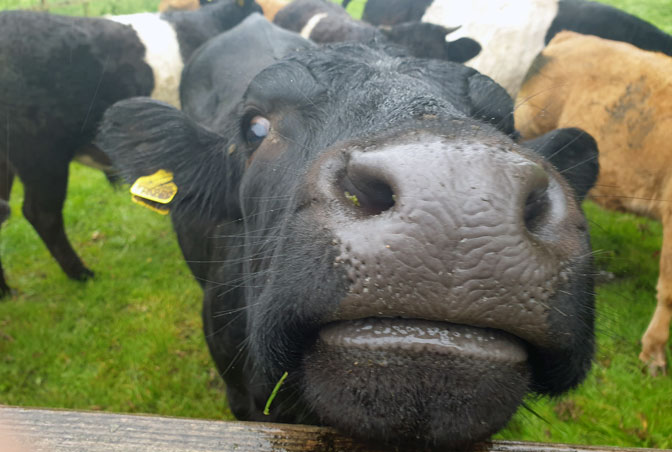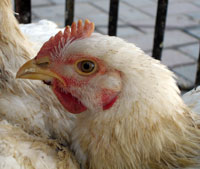
Whatever you call it – H5N1, Avian Flu or bird flu – its emergence in the food chain can be catastrophic for businesses. Poultry firms have seen entire flocks of sometimes millions of chickens and turkeys culled, wiping out profits and potentially businesses entirely.
Which is why cases in 2024 of Avian Flu in US dairy workers, caught from infected herds, has alarmed public health authorities. As of 3 July 2024, four cases in dairy workers have been spotting in the US, in three separate states.
The cases prompted frantic activity at key US government agencies. The Centers for Disease Control (CDC), which describes H5N1 as ‘highly pathogenic’, issued in double quick time new guidelines on dairy work practices and personal protective equipment, including gloves, masks, goggles and gowns. The agriculture department (USDA) published new testing recommendations meant to keep the virus from spreading across state lines.
“The risk here of something going from one or two sporadic [human] cases to becoming something of international concern, it’s not insignificant,” CDC principal deputy director Nirav Shah told a 1 May 2024 Council on Foreign Relations roundtable.
“We’ve all seen how a virus can spread around the globe before public health has even had a chance to get its shoes on,” Shah added. “That’s a risk and one that we have to be mindful of.”
 HOLY COW With cows infected with Avian Flu infecting four US dairy workers, a cow struck by ‘mad cow disease’ in Scotland this year and malaria-bearing mosquitoes rapidly increasing their range, the ILO biological hazards convention cannot come soon enough. See: Biohazards rule.
HOLY COW With cows infected with Avian Flu infecting four US dairy workers, a cow struck by ‘mad cow disease’ in Scotland this year and malaria-bearing mosquitoes rapidly increasing their range, the ILO biological hazards convention cannot come soon enough. See: Biohazards rule.
But poor surveillance and the relatively minor symptoms seen in workers so far – all developed mild conjunctivitis, or pink eye, and only one also had associate breathing problems, and all four made a full recovery – might mean many more cases haven’t come to the attention of the authorities.
Farmers worried about the implications if a herd tests positive and state administrations have made plain they don’t want federal public health teams parachuted in.
There has been relatively poor take up of government offers of support for public health measures and free PPE.
Regulation averse Republican lawmakers have accused the Biden administration of “overreach.” Texas Agriculture Commissioner Sid Miller added: “They need to back off.”
But animal and human health specialists are more inclined to heed the CDC warning.
Speaking in April 2024, when only one human case had been confirmed, Texas veterinarian Barb Peterson told Bovine Veterinarian: “There’s been underreporting of the virus. Understandably, there’s been a lot of fear.
“But every dairy that I’ve worked with has - with the exception of one - had sick human beings at the same time they had sick cows.”
 GLOBAL RULES Negotiations at the International Labour Organisation (ILO) for the first global rules on biological hazards in the working environment have reached the half-way stage. A union team led by James Ritchie made important breakthroughs, including winning against stiff employer objections an agreement the new ILO Convention will cover all biological hazards, not just infection risks, and the impact of climate change on the risks. The negotiations are set to be concluded at the International Labour Conference in June 2025. See: Biohazards rule.
GLOBAL RULES Negotiations at the International Labour Organisation (ILO) for the first global rules on biological hazards in the working environment have reached the half-way stage. A union team led by James Ritchie made important breakthroughs, including winning against stiff employer objections an agreement the new ILO Convention will cover all biological hazards, not just infection risks, and the impact of climate change on the risks. The negotiations are set to be concluded at the International Labour Conference in June 2025. See: Biohazards rule.
Of the almost 900 known cases of H5N1 infection in humans worldwide, the virus has killed about half, according to CDC.
This is more than enough reason for caution.
So far there is no evidence of human-to-human transmission. But, as Covid taught us, it may not stay that way – and at least some subsequent mutations may be more infectious and more deadly.
Jennifer Nuzzo, director of the Pandemic Center and Professor of Epidemiology at the Brown University School of Public Health, argues as well as developing and rolling out vaccines for farm workers, there must be a comprehensive public health response.
“Protecting workers and preventing the next pandemic also require greater virus surveillance on farms and in dairy processing facilities,” she said.
“Wider testing of cows is challenging but essential, as is expanded testing of workers in the dairy industry. Everyone working on dairy farms needs immediate access to antiviral medications in case an outbreak occurs.”
Nuzzo is wary of future mutations, with infections in other mammals seen as a more likely cross-over route to humans. “The more this virus circulates, the more there is a chance for mutations,” she said. And more mutations could mean a bigger risk of the virus becoming highly infectious among more people.
There is already evidence others mammal species can be at risk. Particularly concerning are the deaths of 30,000 South American sea lions and 18,000 southern elephant seal pups in Argentina.
CDC’s Nariv Shah, commenting at the 1 May 2024 roundtable, said “starting about two years ago, H5 started moving its way through different mammal species: foxes, raccoons, sea lions, goats, bottlenose dolphins earlier in the week. We're thinking through what the implications of that are from a human health perspective.”
Jennifer Nuzzo believes this cross-over is a critical concern. “Preventing farmworker infections and uncontrolled spread in mammals is key to stopping the virus from spreading more easily among humans,” she said. “This requires active coordination among federal, state, and local agricultural and public health officials.”
Nuzzo added that farmworkers and workers in food processing plants need incentives to come forward, especially if doing so could potentially cost them in lost wages or their jobs.
CAUGHT IT?
If Covid taught us anything, it was that zoonoses – diseases in animals that cross over to humans – can have catastrophic consequences. So why has the discovery of bird flu in dairy workers not led to the necessary urgent action, asks Hazards editor Rory O’Neill – warning this could be a mistake of pandemic proportions.

| Related stories | |
| • | Global law on biological hazards at work edges closer |
| Hazards webpages | |
| • | Infections |
| • | Climate |
